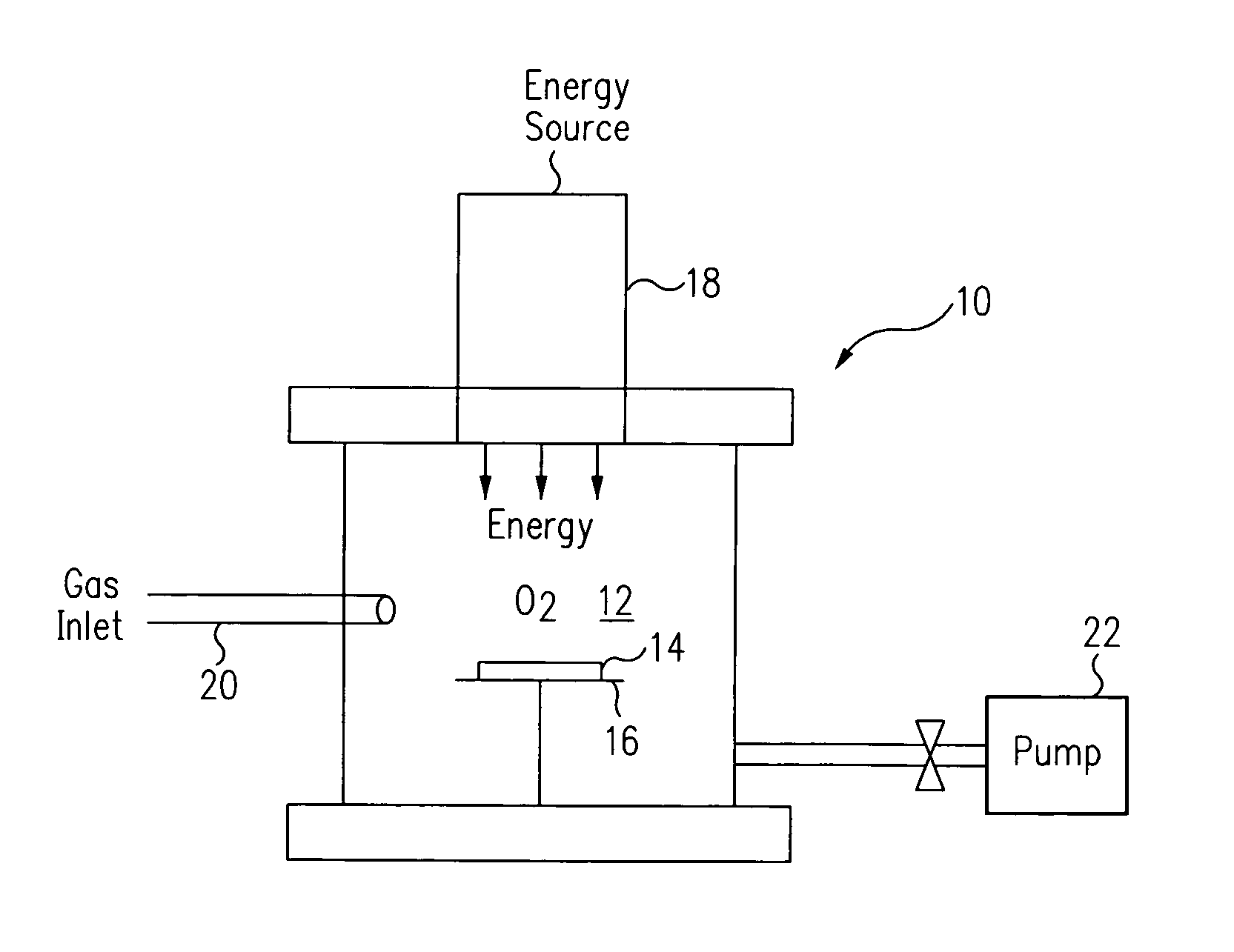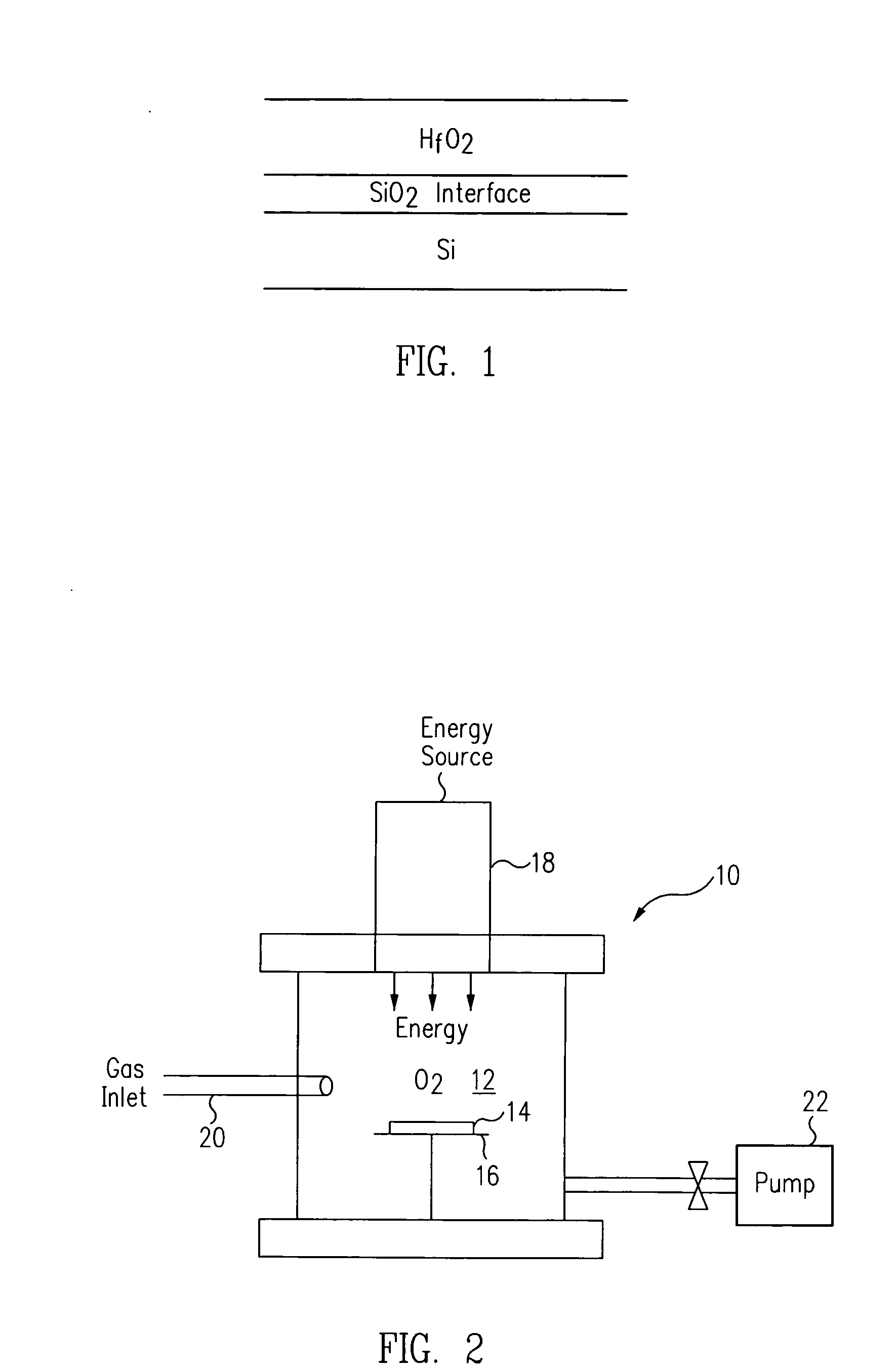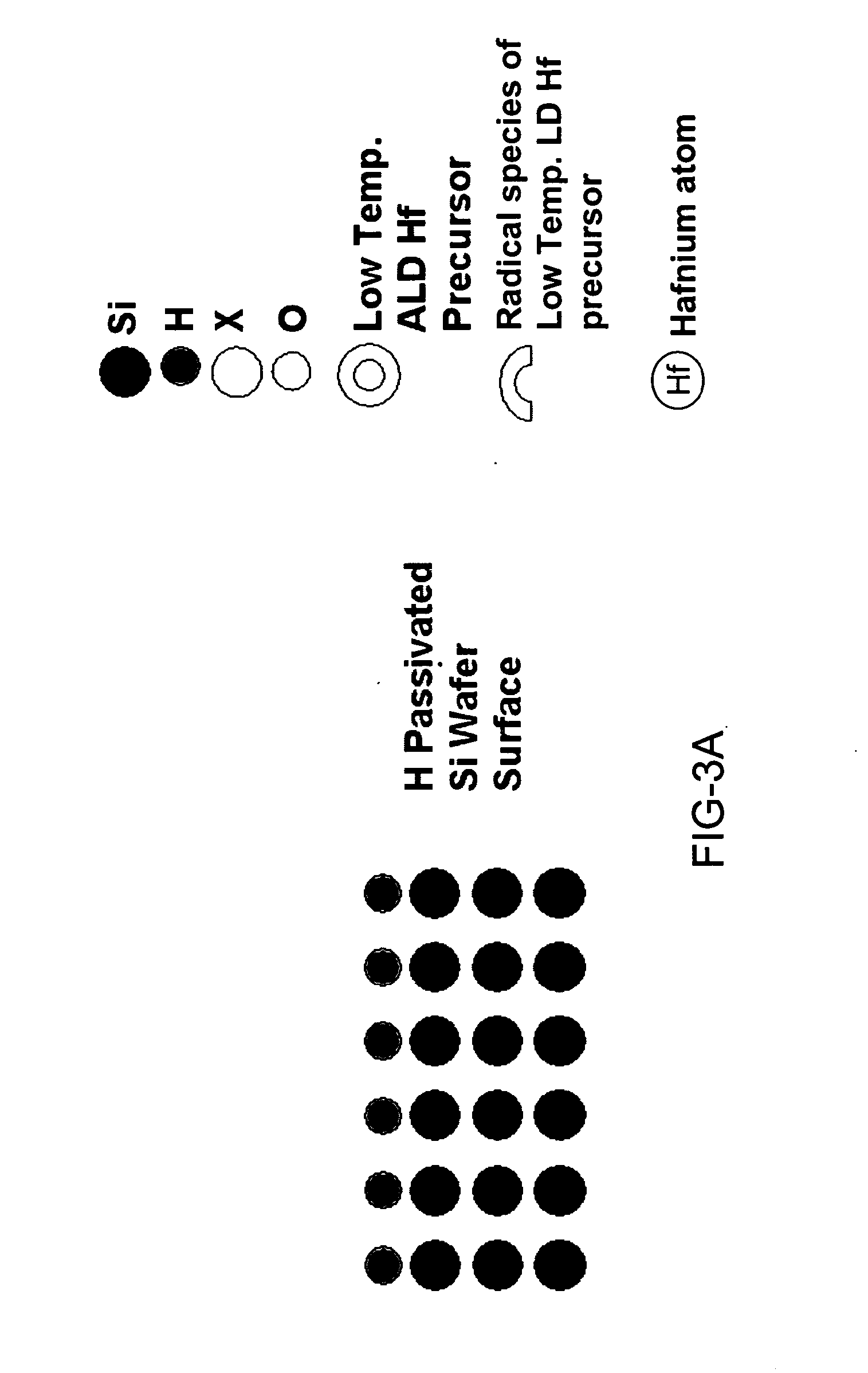Method for energy-assisted atomic layer deposition and removal
a technology of atomic layer deposition and removal, applied in the field of semiconductors, can solve the problems of limiting the useful range of gate oxides to about 1.8 nm, reducing the useful range of gate oxides, and prior art fabrication techniques such as chemical vapor deposition (cvd) are increasingly incapable of meeting the requirements of forming advanced thin films, and achieves the effect of high energy and facilitates the reaction of the first reactant gas
- Summary
- Abstract
- Description
- Claims
- Application Information
AI Technical Summary
Benefits of technology
Problems solved by technology
Method used
Image
Examples
Embodiment Construction
[0014] In general, the present invention provides a method and system of forming films on semiconductor devices and wafers by energy-assisted atomic layer deposition and removal. More specifically, in one embodiment of the present invention, a method of atomic layer deposition of a film on a substrate is provided. In general, the method of the present invention is comprised of the following steps: a substrate is placed in a reaction chamber. The substrate may be a bare silicon substrate, or alternatively may have a film deposited on the surface of the substrate. Optionally, the substrate may be pre-treated to condition the surface of the substrate. Pre-treatment may be employed to clean and / or activate the surface of the substrate.
[0015] A first gaseous precursor is introduced into the reaction chamber about the surface of the substrate. To initiate a desired chemical reaction with the film on the surface of the substrate, energy is employed. Specifically, the gaseous precursor and...
PUM
| Property | Measurement | Unit |
|---|---|---|
| Temperature | aaaaa | aaaaa |
| Temperature | aaaaa | aaaaa |
| Temperature | aaaaa | aaaaa |
Abstract
Description
Claims
Application Information
 Login to View More
Login to View More - R&D
- Intellectual Property
- Life Sciences
- Materials
- Tech Scout
- Unparalleled Data Quality
- Higher Quality Content
- 60% Fewer Hallucinations
Browse by: Latest US Patents, China's latest patents, Technical Efficacy Thesaurus, Application Domain, Technology Topic, Popular Technical Reports.
© 2025 PatSnap. All rights reserved.Legal|Privacy policy|Modern Slavery Act Transparency Statement|Sitemap|About US| Contact US: help@patsnap.com



